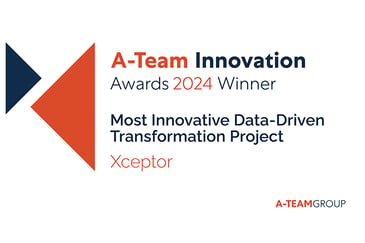In the first installment of our two-part on the world of withholding tax (WHT), we look at some of the key issues for WHT reclaims. We cover the challenges with managing constant alterations to forms, international treaties, and market demands, and whether people or technology is the biggest asset in the broader WHT space.
In most jurisdictions around the world, withholding tax (WHT) applies only to employment income but can also be applied to dividend and interest payments.
With much at stake, the world of WHT has grown in complexity over the years and continues to evolve.
In this note, we review the current state of this critical tax function, how Xceptor adapts to the continual regulatory change that surrounds it, and whether it’s people or technology that is the biggest asset in the intricate world of WHT.
Key issues in the WHT reclaims space
The issues impacting players in the WHT space often differ from one to another. For us, three present the most significant challenges: regulation, legacy technology, and manual processes.
Regulation
Financial intermediaries must comply with a barrage of new, altered, and data-driven regulations every year.
Within this moving regulatory environment, many tax authorities come under pressure when executing the core task of refunding WHT reclaims, as much more than just an applicant’s reclaim form must be verified. Depending on the market, bundles of supporting documentation, trade data, and withholding statements are invariably needed to prove eligibility.
Each jurisdiction and market possesses its own nuances, rules, and legal requirements. Overcoming these regulatory obstacles can feel like an eternal battle where fines, loss of business, and reputational damage all cast an ominous shadow.
Legacy technology
Legacy technology stacks lack of flexibility prevents intermediaries from integrating new regulatory requirements and the increasing volumes of data they demand.
Even today, most intermediaries depend on tactical, single-function solutions that have never been replaced by more strategic processes, create maintenance challenges, and impede ongoing testing and data quality.
From a customer perspective, legacy and disparate technology systems also make subscribing new customers to the latest services virtually impossible.
Manual, paper-based tax reclaims processes
Many global tax authorities still require original paper documents, forcing intermediaries to complete multiple manual processes.
These manual processes range from document recordkeeping and impromptu system updates to working with Excel-based data that prevents scalability of operations.
As a result of these administrative burdens - just to keep on top of reclaims documentation - processing is slowed, and the risk of reclaim expiry grows.
Managing constant alterations to forms, international treaties, and market demands
Our Tax Processing module leverage the capabilities available within our platform. It’s been designed so that you can adopt automated processes that deliver trusted data.
For example, you can easily update data changes to tax forms or new tax treaties directly in the platform to meet the latest regulatory amendments. Not only can such tasks be completed by any tax user, but the ease with which they’re completed eliminates the need for IT intervention, thereby leaving engineers to concentrate on more mission-critical assignments.
Our platform also ingests data in whatever format you receive from your preferred tax advisory firm, ensuring the latest tax rules and rates for each market regulation are always incorporated.
Elsewhere, our Tax Intelligence module has been designed for operational teams that manage regulatory change. Viewed through a single platform, it captures any regulatory alerts and manages all regulatory changes through a structured workflow, including producing and distributing market updates to customers.
People or technology. Which is the biggest asset within the WHT reclaim space?
As one cannot exist without the other, it’s impossible to designate either people or technology as the bigger asset.
For intermediaries, a unified, standard technology solution is essential for retaining more tax processes. Such solutions provide you with a reliable and comprehensive end-to-end process from when a customer is onboarded to the point, they begin trading stock or receiving a level of income that triggers tax obligations.
Additionally, intermediaries are empowered to handle larger trade volumes and service new and more complex customer types, always confident that data is up-to-date and easily accessible in case of an audit. Ultimately, this breadth of functionality leads to a more automated and efficient tax function, allowing for higher revenue generation.
Nevertheless, people will always be a core element within the WHT space. The regulatory landscape is complex and requires appropriate risk assessments to ensure compliance. Experienced individuals must constantly analyze new legislation and anticipate impacts on customers and internal system infrastructures.
At Xceptor, we’ve witnessed a shift in the daily tasks within many intermediaries who’ve automated their tax function. This has been particularly evident across human resources, which has become more focused on exceptions management and analysis rather than the manual processing of paper documents. Automating Tax empowers your people to focus on service your customers better.
Looking to the future
Having explored the current state of play in the world of withholding tax, the next step is to look towards the future and how this crucial function will evolve to meet increasingly sophisticated customer and regulatory demands.
In our next blog, we look at the regulatory impact of WHT on emerging crypto assets and what the future might look like for WHT reclaims.



